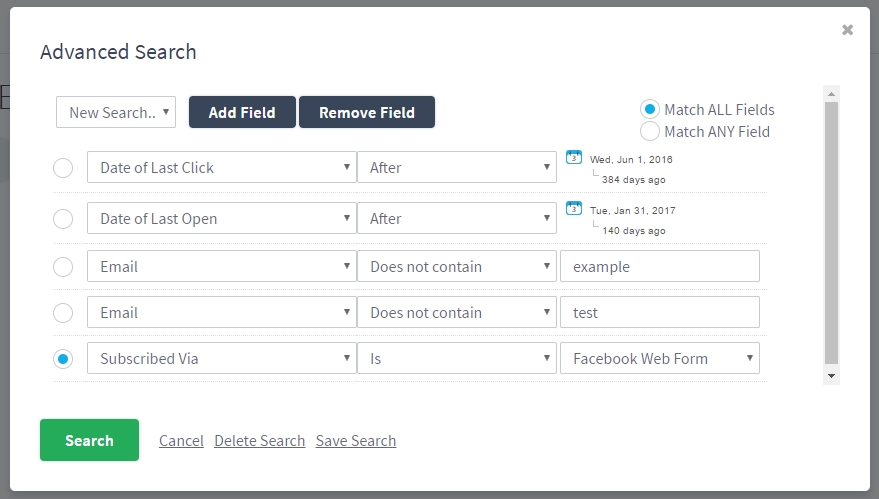Creating a steady stream of original, valuable and educational content is no easy feat. If your content marketing team is anything like ours, you will devote many hours to the creation of guides, blogs, infographics and videos. All to increase ideal customer engagement and improve SEO.
Achieving success with content marketing is more than just creating kick-ass content. It’s driving that attention to your content and getting your audience to stick around. Content distribution and amplification. As marketers, we need to spend more time promoting and distributing the content we create. If a tree falls in the forest and no one hears it, did it really fall? The same thought applies to content. If no one can find the content, then no one can read it. It may as well not exist.
Email marketing is one of the most effective channels to circulate our content. Firstly, to maximise success, we need to ensure our content is personalised for our ideal customers (aka buyer personas). Whether it’s aimed at nurturing leads or engaging current customers, it needs to have appeal. This is where batch and blast emails are counterproductive.
According to Venturebeat, triggered emails have far higher conversion responses, 624% higher when compared to the ‘batch and blast’ approach. In fact, the comparison went on to show that a personalised email has a 381% higher click rate and a 180% higher post-click conversion rate. Talk about impressive!

This is where an automated email marketing campaign is better for our audiences and for our own content marketing efforts. Automation allows us to plot out a customer journey and deliver our content through triggered autoresponders. We have the power to deliver content using our audiences behaviour, time-based triggers as well as date and anniversaries.
Here are a few things to keep in mind when automating your content.
Line Your Content Marketing Goal Posts:
Each automated email campaign should have a unique goal. We can determine this by simply asking, ‘What is the objective?’ Determining the goal will help establish the type of content required for the automated marketing campaign. The most common goal with email marketing campaigns is to nurture leads. Take them on a journey that funnels them into becoming paying customers. However, you can also consider improving customer retention by developing a welcome series of email and SMS to grow that relationship initially. There’s a lot of power we have as marketers to decide how best to capture that attention and grow the relationship.
For example, our Email Marketing Metrics report. It provides our customers benchmarks for email marketing that are regularly reviewed and updated. This encourages them to review how they are using our product, and what they can do to improve their results. For us, this is about customer support, customer retention, and opening up communication for additional engagement.
Fresh to Death Content
Google is always updating, meaning the goal posts are never static. No longer can we adopt a “set and forget’ mindset. If we do, we’ll watch all the hard work to gain organic results disappear into the digital abyss. This can also be an easy trap to fall into with automated email campaigns. After all, part of the attraction to marketers is that the ‘heavy lifting’ is already done. If only life was that easy…
Constantly look to add new content, review and even repurpose existing content. We all know that it is important to A/B test our content used in our email marketing campaigns. Test the subject lines, test CTAs, test personalization techniques, test buttons – find out what works best for the target audience and your content marketing campaign.
Create a personal experience by segmenting your database
Segmenting your database is a powerful way to create a personal experience for our audience. Why is this important? Great question! Nearly 8 out of every 10 consumers believe that the majority of retailers and brands simply do not get them. This creates a disconnect. The flip side to this is that personalised email campaigns receive more than a 25% in higher click rates and 11% higher open rates by comparison.

Segmentation is simply breaking our entire database down into more relevant segments. Segments can be leads and existing customers, gender based, age based, location based and more. This allows us to create more targeted content delivered in a more timely method. We’ve covered some quick ways you can start getting more from your database here.
Let’s get Visual
‘A picture is worth a thousand words’ – ok, unless you have excessively long Alt Image Text, this saying does not apply to search engines like Google. However, for our ideal customer, a picture really makes a big difference for a number of reasons. An image or video helps clarify and reinforce our message, it breaks up large blocks of text, and if done well, will also emotionally engage our audience.

Never underestimate the power of applying creativity to marketing emails. Tubular Insights found that about 50% use video content for email marketing, and 73% of marketers say video has positively impacted marketing results. If you don’t have access to a videographer, try including images or branded visuals. Creative components keep your emails interesting and engaging for prospects.
Performance Tracking is Key to Content Marketing
Like everything in marketing, we need to tie everything back to the return on investment (ROI). Marketing is a revenue driving department, so putting a score on the board with our content is vital. As Marketers, that means we need to analyse, review and tweak all the channels we are using. Email marketing provides strong metrics in terms of how our message is performing. Always, always, analyze your results.
Did your content drive up attendance at a training session which is linked to customer retention? Did it drive traffic to the website and conversions? The good thing about having this data is that you can then incorporate these learnings into your other marketing endeavours.





